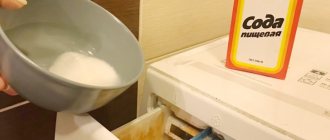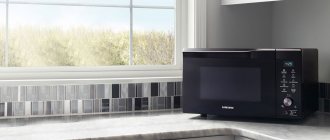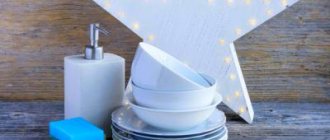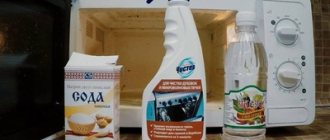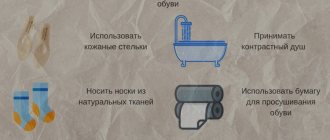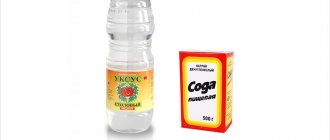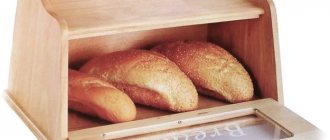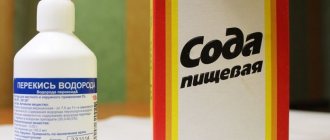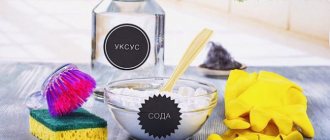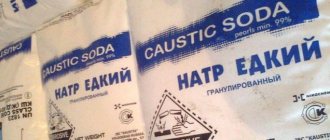[General features of care]
Fulfillment of doctor's orders related to the treatment of the patient, namely: cupping, medicinal baths, gas tube, mustard plasters, instillation of drops, enemas, compresses, rubbing, bandages, taking medications orally, using ointments, gastric lavage, bubble with ice, medicinal suppositories.
[General care features]A. N. Golovko. Observation of the patient [Duration: 69 min]
Arterial pressure.
Physical activity. Breath. Feces and defecation.
Coordination of movements. Sputum. Urine and urination.
Pulse. Body temperature. Students will gain an understanding of the methods of examining a patient in nursing therapeutic practice and their diagnostic significance.
Teachers
News
- [Prevention of disease development]Active longevity with a high quality of life for the Russian population
The incidence rate in older people is 2 times higher, and in old age – 6 times higher than among young and middle-aged people.More than 70% of this category of people have 4-5 or more chronic diseases. Most often: diseases of the cardiovascular, nervous, endocrine, hematopoietic, osteoarticular systems, respiratory, digestive, eye and ear.
- [General features of care]Geriatrics
Geriatrics is a field of clinical medicine that studies diseases of elderly and senile people, developing methods for their treatment and prevention in order to preserve the physical and mental health of a person into old age. - [General features of care]Techniques for performing medical procedures
Fulfilling doctor’s orders related to the treatment of the patient. Cupping, mustard plasters, medicinal baths, gastric lavage, enemas, bandaging techniques.
All teaching aids
- Resource Center for Palliative Care
The Resource Center for Palliative Care specializes in the development of methodological manuals for organizing the work of sisterhoods, parishes and voluntary organizations on the issues of caring for patients with serious illnesses (HIV/AIDS, tuberculosis, oncology). The methods were practically tested during the work of the Patronage Service “Sisterhood in the name of the blessed Tsarevich Dimitri” in hospitals and hospitals from 2005 to 2011. - [ Palliative Care Resource Center ] How to create a volunteer assistant service
The head of such a service should always remember that volunteers are the most valuable thing he has, and his task is, first of all, to make sure that volunteers feel comfortable working within the service, but At the same time, they remembered that the purpose of such a service was to provide assistance, and not to have pleasant joint activities. There are two necessary conditions for the successful operation of the service: you need to love volunteers, value them and help them, including building interpersonal relationships; you need to love your wards and try to make sure that they receive the necessary help and, most importantly, feel sincere love and sympathy. - [Palliative Care Resource Center]Volunteer training course.
Fundamentals of Nursing, Palliative Care and First Aid The Fundamentals of Palliative Care and Nursing training program is designed to prepare volunteers to provide support, care and assistance to patients with chronic progressive diseases that lead to partial or complete loss of self-care. The program is compiled in accordance with the requirements set out in the approximate standard programs in the subjects: “Fundamentals of Nursing” and “Nursing in Surgery”, approved in accordance with the State educational standard for the specialty “Nursing”. - [Palliative Care Resource Center]HIV infection.
Methodical manual The methodological manual is compiled in accordance with the requirements of the State educational standard and is intended for teachers and students of medical schools studying in the specialty Nursing at a basic level of education. This manual can be used by teachers in the subject of Nursing in infectious diseases, with a course of HIV infection and epidemiology, in preparation for classes on the topics: Nursing process in HIV infection, HIV infection: clinical manifestations and forms, and Prevention of HIV infection and occupational infections. - [Palliative Care Resource Center]Manual for caring for the seriously ill
This manual is a training course in caring for patients with partial or complete loss of self-care due to progressive chronic diseases. The manual has been prepared for a wide audience, including nurses of the Sisterhoods of the Russian Orthodox Church, volunteers at home and in health care facilities, as well as junior nurses in medical institutions, relatives of patients and everyone who wants to learn how to care. - [ Palliative Care Resource Center ]Tips for organizers of volunteer groups in hospitals
It is easiest for someone who is familiar with working in a hospital to be an organizer. We must remember that even skillful and thoughtful organization of this work does not always ensure the success of volunteer work.The enthusiasm of many volunteers can quickly fade. Volunteer work requires spiritual guidance. A priest is definitely needed to take this leadership upon himself.
INSTRUCTIONS for washing toys in a preschool educational institution
Before entering the groups, newly purchased toys are washed for 15 minutes with running water at a water temperature of 37° with a 2% soap-soda solution, and then dried in air.
Toys are washed daily at the end of the day, and in nursery groups - 2 times a day.
Doll clothes are washed when dirty using baby soap and ironed.
Foam latex, brushed toys are processed according to the manufacturer's instructions.
2% soap and soda solution – 200g. m.s. solution for 10 l. water.
The use of stuffed toys for children's games is not allowed.
SanPin 2.4.1.2660-10.
INSTRUCTIONS for washing tableware in a preschool educational institution
Crockery and cutlery are washed in 2 or 3-cavity bathtubs installed in the pantry of each group room.
After mechanical removal of food debris, tableware is washed with the addition of detergents (200 grams of soap and soda solution per 10 liters of water), (first bath) with a water temperature of at least 40 degrees.
Rinse with hot running water at a temperature of at least 65 degrees (second bath) using a flexible hose with a shower head and dry on special racks.
The cups are washed with hot water using detergents in the first bath, rinsed with hot running water in the second bath and dried.
After mechanical cleaning and washing with detergents (first bath), cutlery is rinsed with hot water (second bath). Clean cutlery is stored in pre-washed cassettes in a vertical position with handles up.
If cases of infectious diseases occur, the dishes are disinfected (disinfected) in accordance with the established procedure.
DISHES ARE STORED IN THE BUFFET
INSTRUCTIONS
on compliance with sanitary and hygienic requirements
General cleaning one-two-three
The following recipes are good for disinfecting kitchen surfaces, plumbing fixtures, kitchen floors, toilets and bathrooms.
- For 1 liter of water, 10 g of soap and 10 g of sodium carbonate. Shake thoroughly.
- Add 10 g of soap and 30 g of sodium carbonate to 1 liter of water. Mix.
The first composition is weaker, the second is stronger.
Surfaces are treated with a disinfectant solution using a sprayer. After 5 minutes, dirt can be easily removed with a soft cloth or sponge.
All-purpose floor and tile cleaner
Dilute 2-3 tbsp in 5 liters of warm water. l. soda ash and 2-3 tbsp. l. liquid soap.
The resulting product is added to the water for washing the floor. And in case of heavy contamination, spray evenly over the surface. After 5-10 minutes, dirt can be easily removed with a sponge. Then the floors are wiped with a damp, clean cloth.
Attention! It is not recommended to clean wooden and brick surfaces, parquet, laminate, suspended ceilings, surfaces painted with enamels or varnish with soda ash solutions.
Oleg Paramonov, chemist. When using soda ash at home, we must not forget that it is an aggressive alkali. You need to work in rubber gloves and do not inhale fumes during thermal procedures. In case of contact with the skin and mucous membranes, or if swallowed, solutions of soda ash can cause burns and cause irreparable damage to health. Keep sodium carbonate out of the reach of children, in a closed container, away from foods and medications. Soda ash and safety measures are two inseparable concepts.
To keep your plumbing sparkling clean
Plumbing, bathtub, sink, toilet, shower require special care. A solution of 2 tbsp will help clean it from grease, plaque, and dirt. spoons of soda ash per 1 liter of warm water.
For heavily ingrained, old stains, apply a paste of 1 part baking soda and 1 part soda ash to a damp sponge. Cover heavily soiled areas with a layer of paste. Leave for 30 minutes. After this time, spray the problem areas with vinegar and let stand for another 30 minutes. Rinse with hot water, removing any remaining swollen dirt.
Blockage in the pipe - there is a solution
There is absolutely no need to call a plumber if the water is not draining well from your sink. A common everyday problem, a blockage in a pipe, can easily be removed with soda ash. At home, this is a simple and reliable remedy. Sodium carbonate eats away dirt, grease, and food debris stuck in pipes.
We bring to your attention 2 proven recipes that will help solve the problem quickly and inexpensively.
- Half a glass of sodium carbonate is poured into the drain hole and poured with a liter of boiling water. After half an hour, rinse the drain with hot water for 1-2 minutes.
- Take half a glass of soda ash and pour it into the drain hole. Pour in half a glass of vinegar and half a glass of chlorine-containing bleach (“Whiteness”). Close the hole with a stopper and leave for 30 minutes. After half an hour, pour boiling water from a kettle, 3 liters and 1-2 minutes of hot running water over the drain.
Attention! Chlorine vapors are hazardous to health. When working with chlorine-containing liquids, keep windows open and your respiratory tract can be protected with a respirator. After removing the blockage, ventilate the room.
for processing rags
Rags - soaked in a disinfectant solution, then washed at the end of the working day with a 2% soap-soda solution, rinsed, dried and stored in a special labeled container.
3% “Samarovka” 60 minutes – 30 ml. solution + 970 ml.
water or 0.015% clorsept – 15 minutes 1 tablet. clorecept + 10 l. water
2% soap and soda solution – 200 gr. m.s.+10 l. water.
SanPin 2.4.1.2660-10
INSTRUCTIONS for cleaning the toilet room
Sanitary equipment must be disinfected regardless of the epidemic. situations.
Toilet seats, flush barrel handles and door handles are washed with soap and soda solution daily. Toilets are cleaned 2 times a day with kvacha and brushes using cleaning agents and disinfectants; after use, the kvacha is soaked in 3% Samarovka for 60 minutes.
3% “Samarovka” – 30 ml. solution + 970 ml water or
0.1 clorecept 30 min. 7 tab. clorsepta + 10 liters of water.
The pots are washed after each use using kvacha and a soap-soda solution.
200gr. soap-soda solution per 10 liters of water.
Cleaning equipment for the toilet (rags, buckets, brushes) are marked in bright colors and stored in a special closet in the toilet room.
After use, all cleaning equipment is washed with hot water and detergents and dried.
Disinfectant solutions (stored in dark containers) and detergents are kept out of the reach of children.
SanPin 2.4.1.2660-10
Is baking soda a disinfectant?
Before the advent of numerous detergents, housewives used soda. They washed dishes and surfaces with it, and boiled things in the solution to get rid of greasy stains and odors. Many modern cleaning powders and gels contain sodium bicarbonate (soda) as a base.
Baking soda disinfects objects due to its alkaline environment. Under such conditions, many microorganisms die. There are different types of compounds that differ in chemical composition.
Caustic soda is an aggressive caustic soda; when used for disinfection, it is important to follow the instructions for use:
- For home – 1 g of dry caustic powder and 100 ml of water or 2 ml of liquid caustic soda solution per 100 ml of water.
- Preventive treatment of livestock buildings and farmsteads - a 4% concentration is needed, i.e. 40 g of powder per 1 liter of water or 80 ml of liquid form for the same volume of water.
- If a sick animal is detected, the concentration increases to 5–10%, depending on the causative agent of the pathology.
Caustic is an excellent disinfectant. It is diluted in a plastic container. Unused remains are stored in tightly closed containers out of direct sunlight.
A milder disinfectant is soda ash. Consists of sodium carbonate. Suitable for cleaning dishes, clearing blockages in pipes, washing clothes, disinfecting surfaces. Disinfects and cleans well. To obtain a working solution, 3 tbsp. l. powder is diluted in 1 liter of water.
The most common baking soda is sodium hydrocarbonate or sodium bicarbonate, suitable for cleaning dishes and leaving baked goods. The substance is safe, non-toxic, dissolves well in warm or hot water, is easily washed off, and disinfects.
Will soda destroy coronavirus (scientific evidence):
INSTRUCTIONS for changing bed linen in a preschool educational institution
— Bed linen and towels are changed when soiled, but at least once a week. All linen is marked.
Bed linen, except pillowcases, is marked at the foot edge. Each child must have three sets of linen, including face and foot towels, and two changes of mattress covers. Clean linen is delivered in bags and stored in closets.
— After use, the laundry is placed in a special tank, a bucket with a lid, an oilcloth, plastic or double fabric bag. Dirty laundry is delivered to the laundry room (or to a special room). Cloth bags are washed, oilcloth and plastic bags are treated with hot soap or soda solution.
— bedding: mattresses, pillows, sleeping bags should be ventilated directly in the bedrooms with the windows open during each general cleaning, and periodically taken out into the air. Once a year, bedding is dry cleaned or treated in a disinfection chamber.
SanPin 2.4.1.2660-10
Instructions for processing “Health” tracks
“Health” tracks are made from materials that need to be processed (oilcloth, self-adhesive film, leatherette, linoleum, plastic, wood).
After each use, the “health” paths are wiped with a hot soap and soda solution, using a basin for wetness. cleaning the group room.
SanPin 2.4.1.2660-10
Today, there are quite a lot of products on the chemical market that allow for very effective disinfection.
Moreover, any manufacturer tries to convince us that the chosen product is completely safe and not harmful to our health. Sometimes his arguments can be quite eloquent, because the manufacturer provides us with all quality certificates and other relevant papers. But it often happens that when reading the composition of a product, we cannot assess its safety.
After all, not all consumers are professional chemists and understand the toxicity of compounds and substances. This question becomes even more relevant if your family has small children. The safest disinfectant today is a solution consisting of laundry soap and ordinary soda.
As you know, baking soda and laundry soap are a good pair for any disinfection. Laundry soap dries the skin perfectly, so it has long been used to treat ulcers and pimples. What do you need to know about soap and soda solution?
Firstly, this solution is absolutely environmentally friendly for humans; you will never have an allergic reaction to one of the components of the solution. But in order not to get the opposite effect, you must strictly follow the recipe for making this solution. In Soviet times, when there were not so many chemicals, only soap and soda solution was used for disinfection.
Today, almost all the advantages of this product have been revealed. Soap-soda solutions have recently begun to be used for cosmetic purposes and as a hygienic solution. But they use it only for external use.
Using a soap-soda solution
Probably every housewife has regular baking soda. But it can be used not only for preparing dough, but also as a good surface cleaner. Baking soda is also used together with laundry soap as a hygiene product.
They are perfectly capable of cleansing our body. As you know, baking soda is absolutely safe for human health. It cleans all surfaces very well, and, most importantly, it does not cause allergies.
Kitchen soda is known for having good antimicrobial properties. Laundry soap removes odors from things well and cleans any surfaces from dirt and grease. In order for disinfection in the house to be carried out more efficiently, our regular soap can be added to it.
This mixture of soda and soap is in demand in clinics and kindergartens for cleaning premises. Use this solution for disinfection at such intervals as specified in sanitary standards. This disinfectant solution should be used for our household purposes in the event of an outbreak of any kind of respiratory disease or when there is a person in the room who is suffering from infectious diseases.
This product is made depending on what kind of surface you plan to treat. Thus, you should take laundry soap and soda in different proportions.
Washing, cleaning, cleaning, driving out insects? That's right, soda ash!
Soda ash (formula Na2CO3) will successfully replace the expensive chemicals that we use every day. It can be used to clean, wash, wash, remove blockages in drain pipes, and remove unpleasant odors.
Gardeners use it to control garden weeds and treat plants. The scope of use of soda ash at home is quite wide.
Just a couple of decades ago, every housewife had a pack of soda ash on her shelf. When there was no such choice of detergents, there was no alternative. Today they forgot about it, but in vain.
What is the secret of the action of sodium carbonate, how to use it correctly? Can this cheap powder really solve most household problems?
Making a soap-soda solution
For quite a long time, sodium bicarbonate has been used both for the prevention of various diseases and as a disinfectant. Let's look at how to make a soap-soda solution. First you will need laundry soap.
And today it is sold both in pieces and in liquid form. If you bought a bar of soap, then you need to grind it. This is best done using a regular grater.
As a result, you should end up with soap shavings, which you need to fill with cold water. The volume of water you need to take is about two liters. Next, put this mixture on the fire and wait for the soap to completely dissolve.
You will need to add five tablespoons of baking soda to this solution. Next, you need to boil this solution for ten minutes, then leave it to cool and infuse. You need to ensure that the resulting solution turns into a thick mass.
You can use this disinfectant for cleaning the room, washing the floor, tiles. You can also wash dishes with this product. After all, not only does this product have a disinfectant effect, it also cleans grease well from any surface.
What is the difference between soda ash and baking soda and caustic soda?
We go to the store for soda ash. Not to be confused with food grade and caustic. It is sold in laundry departments.
This is interesting! Soda was known to man approximately one and a half to two thousand years BC. The ancient Egyptians used natural soda extracted from lake waters. Used as a detergent and also for melting glass.
Soda ash is used only for technical purposes. International name: Sodium carbonate. Chemical formula: Na2CO3, synonyms: Sodium carbonate, Sodium carbonate.
Available in the form of powder (grade B) or granules (grade A) white. The product is highly hygroscopic, and in aqueous solutions it has a strong alkaline reaction.
Soda ash, baking soda and caustic soda are salts of carbonic acid with varying degrees of acidity. In the table below you can see the differences between these substances.
| Types of soda | Formula | pH | Chemical name | Hygroscopicity/Appearance | Hazard Class | Fire/Explosion Hazard |
| Food | NAHCO3 | 8 | Sodium bicarbonate | +/white crystalline powder | Non-toxic | — |
| Calcified | Na2CO3 | 11 | Sodium carbonate | ++/colorless crystalline powder | 3 | — |
| Caustic | NaOH | 13 | Sodium hydroxide | +++/white hard scaly mass | 2 | -/+ when heating |
Conditions and periods of storage of soda ash
Soda ash is a crumbly, lump-free powder. Shelf life is 5 years, provided that it is stored in special packaging. It actively absorbs moisture and carbon dioxide from the air if it is open. In a humid atmosphere, upon contact with air, it cakes and loses its properties.
At home, after opening the package, it is best to store soda ash in a glass container covered with a plastic lid. The jar must be labeled so as not to confuse it with food products.
Carefully! If soda ash gets into the digestive tract, serious, intractable, long-lasting burns can occur. Avoid placing a can of baking soda on food shelves where it could be confused with salt, sugar or flour. Keep out of the reach of children. The container with soda ash must be labeled.
If soda is stored in paper packaging, then after opening it can retain its properties for no more than 25 days.
Disinfection of children's toys
The topic of disinfection of children's toys requires special attention.
After all, children take toys with them outside, and then lick their fingers, and, as is known, germs and other pathogenic organisms remain on the toys. To prevent your child from developing health problems, it is recommended to wash toys with a disinfectant. You can cook it yourself.
All you need is 50 g of laundry soap and two teaspoons of baking soda. You must fill all these components with one liter of clean water. And then, in a well-mixed solution, you need to wash the toys, then rinse and wipe them dry.
As you know, in children's educational institutions, routine disinfection is carried out for the child. And at home you can do it as needed. Such preventive measures can keep your baby healthy.
Why is it important to disinfect toys?
Children, especially small ones, are open to attacks from all kinds of viruses and bacteria. Because they spend a lot of time on the floor, putting everything in their mouths in their mouths, and playing with various objects. Dust, microorganisms, and fungi accumulate on the latter.
To protect the child from infection, poisoning or the development of allergic reactions, all children's toys are disinfected in a timely manner. Including: for infants - twice a day, for older children - at the end of each day.
In order not to create unnecessary problems for yourself, you do not need to give your child a lot of nesting dolls, pyramids or balls. Three or four types are enough. But they can be changed often and diversify children's games.
Soap and soda solution for washing dishes
Modern housewives are beginning to understand the importance of not only environmentally friendly things and products, but also dishwashing detergents. Therefore, they are slowly switching to homemade products.
In order to make a good dishwashing detergent you will need: one piece of laundry soap, two liters of cold water, about five tablespoons of salt and one spoon of mustard powder. All these components need to be brought to a full boil and wait until the mixture becomes like a paste. This product can be used to wash any, even the dirtiest, dishes.
Mustard in combination with a soap-soda solution works well to remove grease from the surface of the stove. This dishwashing detergent is very cheap and very effective. Also, do not forget that there is absolutely no harm from such dishwashing detergent.
Special Recommendations
Since disinfection is carried out in connection with the desire to get rid of harmful microbes, therefore cleaning is best done using rubber gloves. During cleaning, it is very important to simultaneously ventilate the room itself where disinfection occurs. If you decide to clean in the winter, you can open the window for ventilation.
But this stage is very important, since all the infection must leave the room. It is also important to talk about the frequency of cleaning. It is better to do it once a day.
But the total number of days should depend entirely on whether there are still sick people in the room or whether they have already begun to recover. Use these tips and recommendations for disinfecting surfaces with soap and soda solution. If you have any doubts about using these products, consult your dermatologist.
Soap and soda are widely used in everyday life, kindergartens, schools and hospitals for disinfection, washing and even for the treatment of certain diseases. Soap and soda are quite active substances on their own, but when combined they enhance and complement each other’s effects.
To use the properties of soap and soda with maximum benefit, you need to properly prepare a soap-soda solution.
How does baking soda affect the oral cavity?
Sodium bicarbonate is used for the purpose of prevention or a gentle regime for gum restoration after a tooth has been pulled out or an incision has been made to remove a boil. Soda reduces inflammation, accelerates tissue regeneration, increases the healing effect, slows down the growth of harmful bacteria, and disinfects the wound.
The use of soda when rinsing the mouth is of great importance for the dentist, since it is easier to convince the patient to undergo preventive treatment with soda than with other methods.
What soap is suitable for preparing a soap-soda solution?
To prepare a soap-soda solution, it is best to use laundry soap. Regular laundry soap has a simple natural composition without harmful chemical impurities. Laundry soap is the basis of other types of soap and detergents.
Thanks to its alkaline base, laundry soap has antibacterial, antifungal, and cleaning properties.
It is used to treat skin and nail fungus, to wash purulent wounds and other skin lesions in the absence of medications. If the soap-soda solution is prepared taking into account the correct dosage and used in accordance with the instructions, it will not cause harm and can be widely used for household and medicinal purposes. The concentration of soap and soda in a soap-soda solution will vary depending on the purpose for which the solution is made.
How to prepare a soap-soda solution for disinfecting premises
Nowadays, stores offer a huge selection of detergents and disinfectants.
Many of them contain chlorine, which negatively affects health. It is possible to treat rooms with chlorine only in the absence of people. But even after such treatment, chlorine vapor remains in the air and enters the respiratory tract.
This is especially dangerous for children and people with allergies.
Soap and soda solution for disinfection is safe for health.
It is recommended to be used for cleaning premises in children's institutions, hospitals and kindergartens. Toys and other common items are treated with soap and soda solution. This is especially important during epidemic periods.
At home, you can also wash floors, toys, and furniture with a soap-soda solution, especially if one of the family members is sick with a viral infectious disease.
An important quality of a homemade soap-soda solution is its low price. This is perhaps the cheapest disinfectant available in every home.
To prepare a one percent soap-soda solution you will need:
- 10 liters of water;
- 100 g laundry soap;
- 100 g soda.
To prepare a two percent solution of soap and soda, take twice as much for the same amount of water.
Instead of regular soda, you can use soda ash to wash floors. Premises in kindergartens are cleaned at least once a day. Treatment of floors at home should be carried out after contact with a sick person or once a day during epidemics.
The following soap and soda solution is recommended for treating children's toys:
- 50 g soap;
- 2 tbsp. spoons of baking soda;
- 1 liter of warm water.
After treatment, the toys are rinsed in a weak solution of baking soda and wiped dry. Shared toys are washed every day. It is recommended to treat toys at home with soap and soda solution during epidemics and after contact with sick people.
There is a recommendation on what to do if a mercury thermometer breaks. First, the mercury is collected with a syringe or a rubber bulb for douching. The container of mercury is then sealed in an airtight container and services are called to dispose of the mercury.
The floor is treated with a soap and soda solution of the following composition:
- 60 g soap;
- 60 g soda ash;
- 2 liters of water.
SANPIN rules
The sanitary and epidemiological standards developed for preschool institutions, hospitals, and clinics provide instructions for the preparation and use of the solution.
Use of the product according to SanPiN:
- in preschool institutions, a 2% solution is used twice a day to treat toys, clean surfaces, carry out wet cleaning, and clean furniture;
- in inpatient departments and clinics, soap and soda solution is used for daily and general cleaning of premises and equipment;
- according to the instructions, a 1% solution is used for cleaning floors; a 2% solution is used for treating toys and furniture in kindergartens;
- For general cleaning, regardless of the purpose of the room, only a 2% solution is used.
Soap and soda solution for washing dishes
To wash dishes, a gas stove and other kitchen utensils, you can prepare a soap-soda solution, which is not inferior in cleaning properties to ready-made dishwashing detergents and is safe for health.
For such a solution you need:
- Grate 100 g of soap on a coarse grater;
- put the soap in 2 liters of water, heat and stir until dissolved;
- cool the solution;
- add five tablespoons of soda and one spoon of dry mustard;
- bring to a boil, but do not boil.
Using soap and soda solution for medicinal purposes
Soap and soda solution is used as a home remedy to treat nail fungus. You should not use soap and soda solution to treat children. Adults can try treating the fungus with a soap and soda solution in addition to the treatment prescribed by the doctor.
Before using solutions, you should consult your doctor.
Here is one of the popular recipes:
- Dissolve one tablespoon of soda in 50 ml of water;
- add 50 g of grated laundry soap;
- add a soap-soda solution to two liters of hot water and lower your feet;
- take a bath until the water cools down.
After taking foot baths with soap and soda solution, you need to remove the softened keratinized areas of the skin and nails. Then apply antifungal agents prescribed by your doctor.
The products will penetrate the skin and nails better and the treatment will proceed at a faster pace. In addition, foot baths with soap and soda solution help remove calluses and corns, restoring the beauty of your feet. Remove softened calluses with pumice stone and lubricate your feet with a rich, nourishing cream.
Wash
A soap-soda solution is well suited for removing stains of any complexity. Its main advantage is hypoallergenicity. The solution is suitable for washing clothes for babies and people with skin diseases. It can be used for any items, including delicate items made of silk and wool.
Recipe for soap and soda solution for washing:
- 10 gr. stir soda in 50 ml of warm water;
- add 40 gr. grated soap;
- After stirring well, add the product to the water.
The volume of the prepared product is enough to wash 3-4 kg of clothes.
Using a soap-soda solution for washing children's clothes and linen
Housewives often use a soap-soda solution to wash children's clothes and linen.
In this case, it is advisable to use fairly hot water, above 60 degrees.
This solution costs practically no money; laundry soap and baking soda are the cheapest substances in the house. The only drawback of this solution is the length of time it takes to prepare it and the need to grate the soap. For those who prefer natural detergents, but do not want to spend time making them, we recommend Chistown children's washing powder based on natural soap.
This powder does not contain hazardous chemical components and makes it easy to prepare a soap-soda solution.
Sources:
- www.nko-zdrav.ru
- kindergarten-253.ucoz.ru
- kaknadostroit.ru
- chistown.ru

